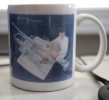I know nothing about RAW images except a little bit I've read on the internet. I decided to take some RAW images and do some editing, compare them to JPEGs and see what the advantages really are.
I have owned Photoshop in the past. After completing a couple of projects, I wasn't using it anymore and let the subscription run out.
I now use GIMP to edit photos - although I'm doing only very basic stuff with GIMP. I just don't have a need to do anything more advanced so I haven't really done a lot with GIMP.
I attempted to open the RAW images in GIMP and found out I need to convert them to another format first. So much for playing with that image format.
If I don't have Adobe products, is there any advantage to RAW images?
I have owned Photoshop in the past. After completing a couple of projects, I wasn't using it anymore and let the subscription run out.
I now use GIMP to edit photos - although I'm doing only very basic stuff with GIMP. I just don't have a need to do anything more advanced so I haven't really done a lot with GIMP.
I attempted to open the RAW images in GIMP and found out I need to convert them to another format first. So much for playing with that image format.
If I don't have Adobe products, is there any advantage to RAW images?











